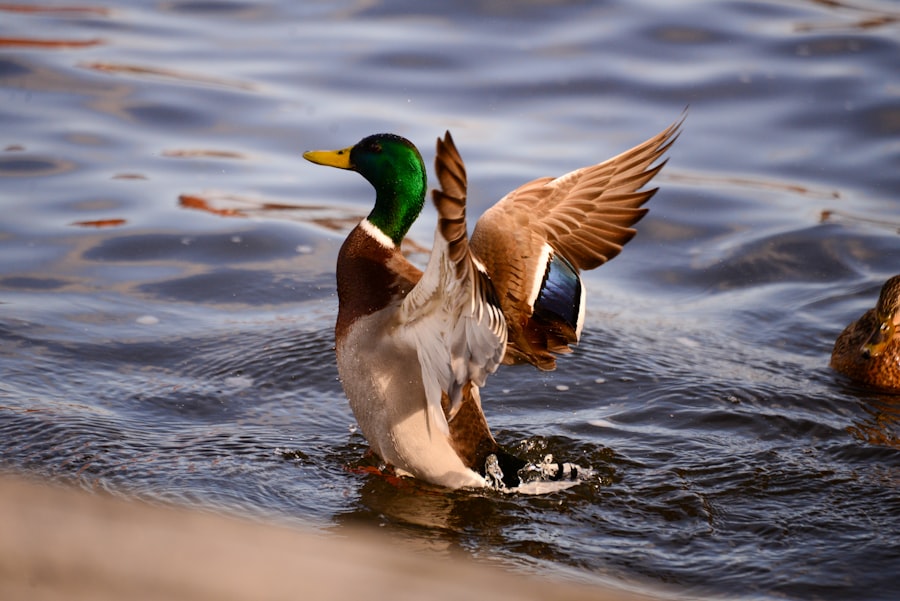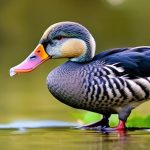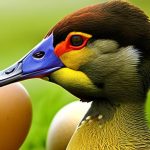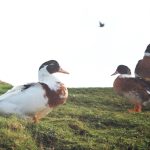Texas duck breeds are a unique and diverse group of ducks that have been bred and raised in the Lone Star State for generations. These ducks are known for their adaptability to the hot and dry climate of Texas, as well as their ability to thrive in a variety of environments, from small backyard ponds to large commercial farms. Texas duck breeds are valued for their meat, eggs, and pest control abilities, making them a popular choice for farmers and homesteaders alike. With their distinctive characteristics and rich history, Texas duck breeds have become an integral part of the state’s agricultural heritage.
Table of Contents
Key Takeaways
- Texas is home to several unique duck breeds that have been developed and adapted to the region’s climate and environment.
- The history and origins of Texas duck breeds can be traced back to the early settlers and their need for ducks that could thrive in the local conditions.
- Texas duck breeds are known for their hardiness, adaptability, and unique physical traits such as their ability to withstand heat and humidity.
- Popular Texas duck breeds include the Texas A&M, the Blue Swedish, and the Khaki Campbell, each with its own distinct characteristics and uses.
- Texas duck breeds are valued for their meat, eggs, pest control, and as pets, and they require proper care and maintenance to ensure their health and productivity.
History and Origins of Texas Duck Breeds
The history of Texas duck breeds can be traced back to the early days of European settlement in the region. Spanish explorers and settlers brought with them various breeds of ducks, which were then crossed with local wild duck populations to create new breeds that were better suited to the Texas climate and landscape. Over time, these ducks were selectively bred for traits such as heat tolerance, disease resistance, and egg production, leading to the development of distinct Texas duck breeds. The Texas duck breeds have also been influenced by the introduction of Asian and African duck breeds, which have contributed to their unique genetic makeup. Today, Texas duck breeds are a testament to the ingenuity and resourcefulness of early Texas farmers and continue to play a vital role in the state’s agricultural industry.
Characteristics and Physical Traits of Texas Duck Breeds
Texas duck breeds are known for their hardiness, adaptability, and distinctive physical traits. These ducks come in a variety of colors, including white, black, brown, and mottled patterns, with some breeds exhibiting striking plumage and markings. They are medium-sized ducks with sturdy bodies, strong legs, and webbed feet that make them excellent swimmers. Texas duck breeds also have a unique ability to withstand high temperatures and are well-suited to the hot and dry climate of the state. Their strong immune systems and resistance to common duck diseases make them a low-maintenance option for farmers and homesteaders. Additionally, Texas duck breeds are known for their excellent foraging abilities, making them efficient at controlling pests and weeds in agricultural settings.
Popular Texas Duck Breeds
Several popular Texas duck breeds have gained recognition for their unique characteristics and valuable traits. The Khaki Campbell is a well-known breed that originated in England but has become popular in Texas for its high egg production and calm temperament. The Runner duck is another popular breed that is valued for its upright posture, excellent foraging abilities, and distinctive appearance. The Pekin duck is a widely raised breed in Texas known for its rapid growth rate, large size, and flavorful meat. The Muscovy duck is also popular in Texas for its ability to thrive in hot climates, excellent mothering instincts, and lean meat. These popular Texas duck breeds have become staples in the state’s agricultural industry and are prized for their versatility and productivity.
Uses and Benefits of Texas Duck Breeds
Texas duck breeds offer a wide range of uses and benefits for farmers, homesteaders, and the agricultural industry as a whole. These ducks are valued for their meat, which is lean, flavorful, and in high demand among consumers. Their eggs are also prized for their rich flavor and nutritional value, making them a popular choice for home cooks and commercial producers alike. In addition to their culinary uses, Texas duck breeds are also valuable for pest control, as they are efficient at consuming insects, snails, and other pests that can damage crops and gardens. Their manure is also a valuable source of fertilizer for gardens and agricultural fields. Furthermore, Texas duck breeds are often used for exhibition and ornamental purposes due to their striking plumage and unique physical traits.
Care and Maintenance of Texas Duck Breeds

Proper care and maintenance are essential for ensuring the health and well-being of Texas duck breeds. Providing a suitable habitat with access to clean water for swimming and foraging is crucial for their overall health. Adequate shelter should be provided to protect them from extreme weather conditions and predators. A balanced diet that includes a mix of commercial feed, grains, greens, and protein sources is important for meeting their nutritional needs. Regular health checks and vaccinations can help prevent common duck diseases and ensure that they remain healthy. Additionally, proper breeding practices should be followed to maintain the genetic diversity and vitality of Texas duck breeds. Overall, attentive care and maintenance are essential for raising healthy and productive Texas duck breeds.
Conclusion and Future of Texas Duck Breeds
In conclusion, Texas duck breeds have a rich history and play a vital role in the state’s agricultural heritage. Their unique characteristics, adaptability to the Texas climate, and valuable uses make them an important asset for farmers, homesteaders, and the agricultural industry as a whole. As the demand for sustainable and locally sourced food continues to grow, Texas duck breeds are well-positioned to meet these needs with their efficient pest control abilities, high-quality meat, and nutritious eggs. With proper care and management, Texas duck breeds will continue to thrive and contribute to the agricultural landscape of the Lone Star State for generations to come. As stewards of these valuable breeds, it is important to preserve their genetic diversity and promote responsible breeding practices to ensure their continued success in the future. By recognizing the significance of Texas duck breeds and supporting efforts to conserve and promote their welfare, we can ensure that these remarkable ducks remain an integral part of Texas agriculture for years to come.
If you’re interested in learning more about raising ducks in Texas, you might also want to check out this article on creating the perfect floor for your chicken coop at PoultryWizard. Proper flooring is essential for the health and well-being of your poultry, and this article provides valuable insights into creating a comfortable and hygienic environment for your birds.
FAQs
What are the different duck breeds found in Texas?
There are several duck breeds found in Texas, including the Mallard, Wood Duck, Northern Pintail, Gadwall, and Blue-winged Teal.
What are the characteristics of Texas duck breeds?
Texas duck breeds vary in size, color, and behavior. Mallards are known for their iridescent green heads and are the most common duck breed in Texas. Wood Ducks are known for their colorful plumage and unique nesting habits. Northern Pintails are recognized by their long, slender necks and pointed tails. Gadwalls have a mottled brown appearance, and Blue-winged Teals have distinctive blue wing patches.
Where can Texas duck breeds be found in the state?
Texas duck breeds can be found in various habitats across the state, including wetlands, marshes, ponds, lakes, and rivers. They are often spotted in wildlife refuges, state parks, and along the Gulf Coast.
What is the significance of Texas duck breeds to the ecosystem?
Texas duck breeds play a crucial role in the ecosystem by contributing to wetland conservation, controlling insect populations, and serving as prey for predators. They also provide recreational opportunities for birdwatching and hunting.
How can I identify Texas duck breeds in the wild?
Identifying Texas duck breeds in the wild can be done by observing their physical characteristics, such as size, coloration, and markings. Field guides and birding apps can also be helpful in identifying different duck species.
Meet Walter, the feathered-friend fanatic of Florida! Nestled in the sunshine state, Walter struts through life with his feathered companions, clucking his way to happiness. With a coop that’s fancier than a five-star hotel, he’s the Don Juan of the chicken world. When he’s not teaching his hens to do the cha-cha, you’ll find him in a heated debate with his prized rooster, Sir Clucks-a-Lot. Walter’s poultry passion is no yolk; he’s the sunny-side-up guy you never knew you needed in your flock of friends!







